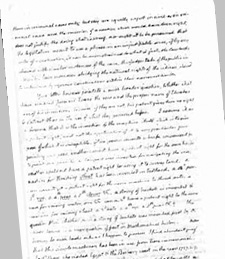The Patent Puzzle | A Brief History | Privatize the Process? |
Open Source and Patent Collaboration | The View from the Bench
 A Brief History
A Brief History
The term “intellectual property” first arose in the mid-19th century, but its origins trace back to patent statutes designed to spur innovation in 15th century Venice and Florence (perhaps even earlier; Charles Anthon’s Classical Dictionary published in 1851 credits the Sybarites in 500 BCE Greece, who gave “great encouragement … to all who should discover any new refinement in luxury, the profits arising from which were secured to the inventor by patent for the space of a year.”)
Those early laudable efforts later devolved when the monarchies in both Elizabethan England and pre-revolution France began granting monopolies to guilds and royal favorites purely as a way to raise revenue. A post-Elizabethan parliament, chafing under such restrictions to free trade, passed in 1623 the Statute of Monopolies, long considered the origin of modern patent law, which repealed all of those grants and allowed patents only for novel inventions. The Statute of Anne in 1710 extended the state’s protection to copyright.
“The Framers believed that a strong patent system would be an engine of growth for this country,” says Chief Judge Michel. “We were a poor, dependent, agricultural colony when we started, and we became the most powerful, richest, and technologically creative nation on Earth over the course of 200 years. A whole lot of that was because we had a well functioning patent system, and we relied on it.”Congress passed the nation’s first patent law in 1790 for inventions “not before known or used…if they shall deem the invention or discovery sufficiently useful and important.” The act designated that any two of the Secretary of State, Secretary of War, or the Attorney General could grant a patent. Under the urging of Thomas Jefferson looking to narrow the right, Congress in 1793 modified patents to mean “any new and useful art, machine, manufacture or composition of matter and any new and useful improvement on any art, machine, manufacture or composition of matter.”
Jefferson, the nation’s first Secretary of State and thus one of the nation’s first patent administrators, was of course a prolific inventor in his own right. He respected inventors and their claims for economic reward, but also believed they should grant access for others to assess and improve their work for public benefit. He wrote in an 1813 letter to Isaac McPherson:
Inventions then cannot, in nature, be a subject of property. Society may give an exclusive right to the profits arising from them, as an encouragement to men to pursue ideas which may produce utility, but this may or may not be done, according to the will and convenience of the society, without claim or complaint from anybody.
In that same letter, Jefferson captured in an historical analogy about the Egyptians the tension between public good and private benefit that has bedeviled patent law up to and including Apple v. Samsung:
A string of buckets is invented and used for raising water, ore, etc., can a second have a patent right to the same machine for raising wheat, a third oats, a fourth rye, a fifth peas, etc.?
In the ensuing 160 years, Congress revised the first patent act some 50 times as it tried to match patent development to the shifting political, technological, and cultural winds emanating from periodic economic depressions, three great wars, and the continuous innovative genius of a creative people, all the while trying to stay true to Jefferson’s “new and useful” test.
In 1952 Congress enacted a patent act meant to clarify all that went before. The explosive growth in technology since then called for much-needed patent reforms to keep pace with a vastly different world. Citing the fact that “the laws protecting the technologies of today are stuck in the past,” Congress passed overwhelmingly the America Invents Act. The vote in the House was 304-117, and in the Senate 89-9. The act implements a first-inventor-to-file standard for patent approval, creates a post-grant review system to weed out bad patents, and helps the PTO address the backlog of patent applications.




